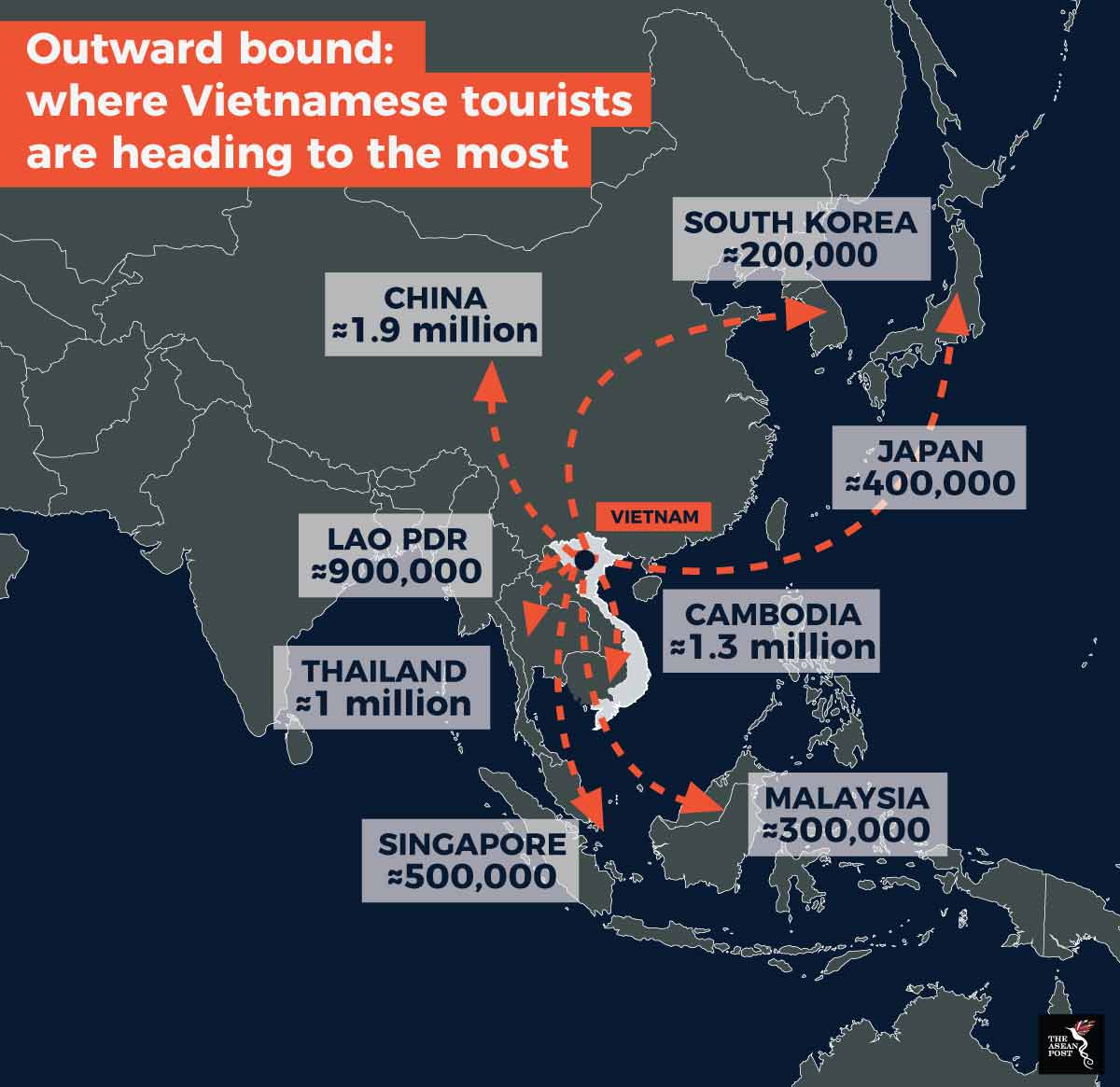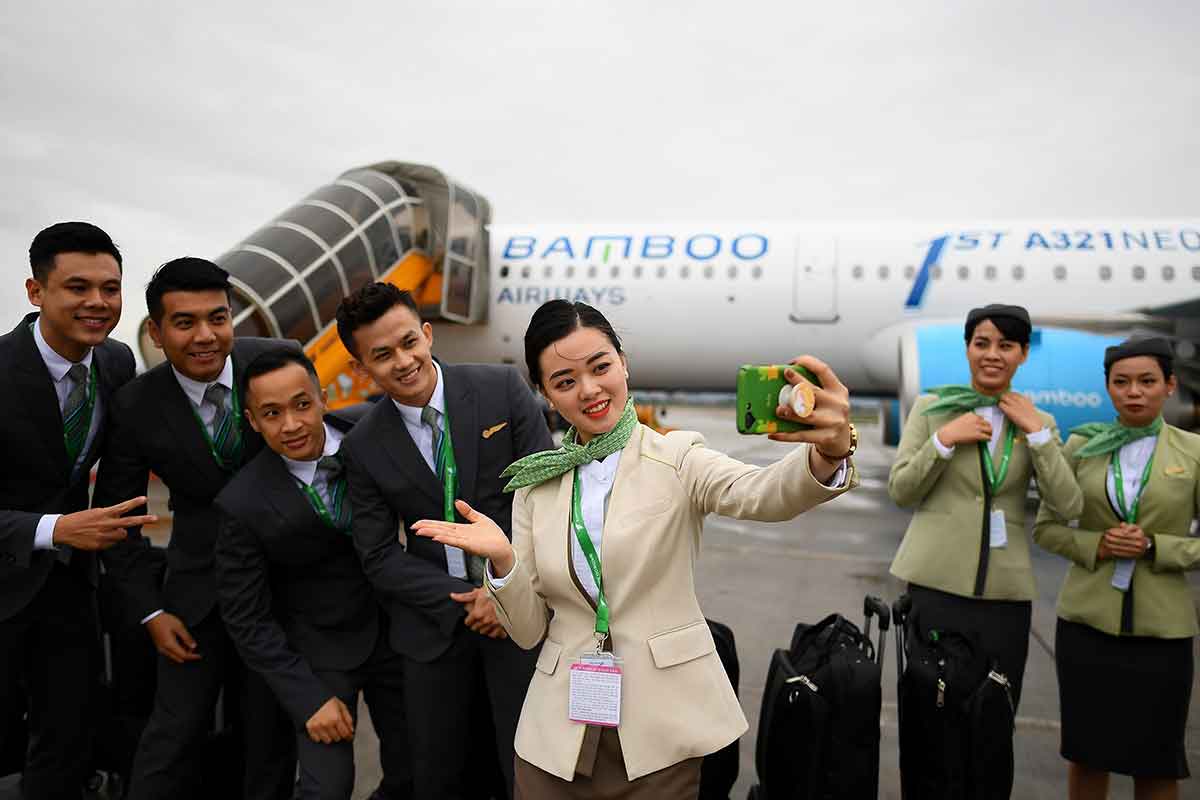Boosted by the fastest growing middle class in Southeast Asia, Vietnam’s travel industry has seen phenomenal growth which has led to Vietnamese airlines launching direct flights to the United States (US) for the first time.
According to the Financial Times, outbound air travel in Vietnam last year grew faster than it ever has and outbound tourism from Vietnam has been growing at an annual rate of 10-15 percent over the past few years according to a Euromonitor report in 2017. This trend can be compared to Vietnam’s neighbour, China, where a rising disposable income is one of the main driving factors behind outbound travel there.
The US Federal Aviation Administration’s announcement in February that the Civil Aviation Authority of Vietnam now meets its standards for personnel licensing, operations and airworthiness has opened the door for three local airlines, including flag carrier Vietnam Airlines, to start nonstop US-bound flights as early as this year – cutting travel time by eight hours.
The other two airlines are budget airlines Vietjet and Bamboo Airways, which in February signed US$20.9 billion worth of aviation deals with American firms Boeing and GE for aircrafts, engines and maintenance services when US President Donald Trump visited Hanoi for his second summit with North Korean leader Kim Jong-un.
Home to two million Vietnamese expatriates, the US is Vietnam’s largest export destination and the move is sure to strengthen ties between the two countries. Vietnam’s tourism administration stated that about 690,000 people travelled from the US to Vietnam in 2018, an increase of 12 percent from 2017 and 60 percent from 2014.
Outbound travel highs
According to Vietnamese media, travel agents said they received 20-30 percent more bookings for overseas travel in 2018 compared to 2017.
“Rising overseas travel is a result of smooth economic development and an expanding middle class. A more affluent younger generation now wants to see the world. They are willing to spend more money on experiencing new destinations,” said Nguyen Cong Hoan, vice general director of Hanoi Redtour.
Meanwhile, a report from market research firm Euromonitor shows that Vietnamese travellers took 7.5 million overseas trips in 2017 alone, with China being the top destination followed by Cambodia and Thailand. According to the Vietnam Tourism Association, Vietnamese tourists spent US$8 billion in 2016 (the latest year for which data is available), which is more than double the US$3.5 billion they forked out in 2012.

The growing middle-class
Stronger domestic demand and robust export-oriented manufacturing has helped Vietnam maintain a steady growth momentum, with market research firm Nielsen estimating that the number of middle class Vietnamese will reach 44 million by 2020 and 95 million by 2030.
Through these economic opportunities, job growth continues, with 1.6 million new jobs added in the manufacturing sector 2015 to 2018, and 700,000 additional jobs in the construction, retail, and hospitality sectors, leading to a higher aggregate of labour productivity. The increase in labour demand also contributed to rapid wage growth, with wages increasing by 15 percent cumulatively between 2014 and 2016.
According to Nielsen, “travel ranks among affluent Vietnamese people’s top three hobbies, ahead of dining out and buying new clothes.” These findings are based on a survey of 300 consumers aged between 30-55 in Hanoi and Ho Chi Minh City, Vietnam’s two largest cities.
Vietnam’s middle class which consists largely of a younger population, is also powering retail and consumer industries like real-estate and automotive.
Vietnamese travel and retail businesses can definitely take advantage of this surge in middle class growth by ensuring their brands are pushed through all relevant channels.
Companies would need to explore below the surface of economic data to understand where the best opportunities lie, and use that analysis to guide their decisions and strategies in order to encourage market growth in all areas of the country.
Related articles:
New airline to join Vietnam's congested skies
